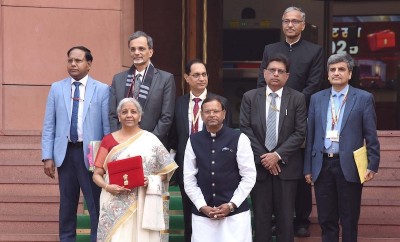
India eyes geothermal energy push by repurposing abandoned oil wells
New Delhi: India is looking to tap into its geothermal energy potential by converting disused oil wells into clean energy assets, Santosh Kumar Sarangi, Secretary at the Ministry of New and Renewable Energy (MNRE), told Moneycontrol in an exclusive interview.
“We are trying to harness geothermal energy by using closed oil wells. To explore its commercial feasibility, we have commissioned IIT (Indian Institute of Technology) Madras to run a pilot in three abandoned oil wells in Bikaner in Rajasthan,” Sarangi said.
The pilot is part of the government’s Renewable Energy Research and Technology Development Programme (RE-RTD) and aims to install a geothermal power capacity of 450 kilowatts (KW) across the three wells.
“If the pilot is a success, then we will take up geothermal energy on a commercial scale,” he added.
According to the Ministry of Petroleum and Natural Gas, India currently has 13,348 abandoned oil wells.
A 2022 Geological Survey of India (GSI) report estimates the country’s geothermal potential at about 10,600 MW.
Yet, India has not operationalised even 1 MW of this potential so far.
Geothermal energy — heat extracted from deep within the earth — is a renewable source that can be used for both electricity generation and heating.
However, high drilling expenses have historically made such projects costly.
The new approach by the Indian government could significantly reduce costs, as abandoned oil wells already come with the essential infrastructure.
These wells can be retrofitted for heat exchange: water or other fluids are pumped into the well, get heated underground, and return to the surface to power turbines or serve other energy needs.
“Basically, some retrofitting is needed in such wells and the production of clean energy can begin,” said a senior MNRE official, who is not authorised to speak to the media.
Geothermal development also aligns with India’s long-term goal of becoming a developed nation (Viksit Bharat) by 2047. The plan includes building a non-fossil-based energy capacity of 1,800 GW by that time.
In the medium term, India aims to have 500 GW of non-fossil fuel-based power capacity by 2030.
This includes solar, wind, hydro, bioenergy, and nuclear energy — though geothermal is not yet counted toward that target.
Support Our Journalism
We cannot do without you.. your contribution supports unbiased journalism
IBNS is not driven by any ism- not wokeism, not racism, not skewed secularism, not hyper right-wing or left liberal ideals, nor by any hardline religious beliefs or hyper nationalism. We want to serve you good old objective news, as they are. We do not judge or preach. We let people decide for themselves. We only try to present factual and well-sourced news.







